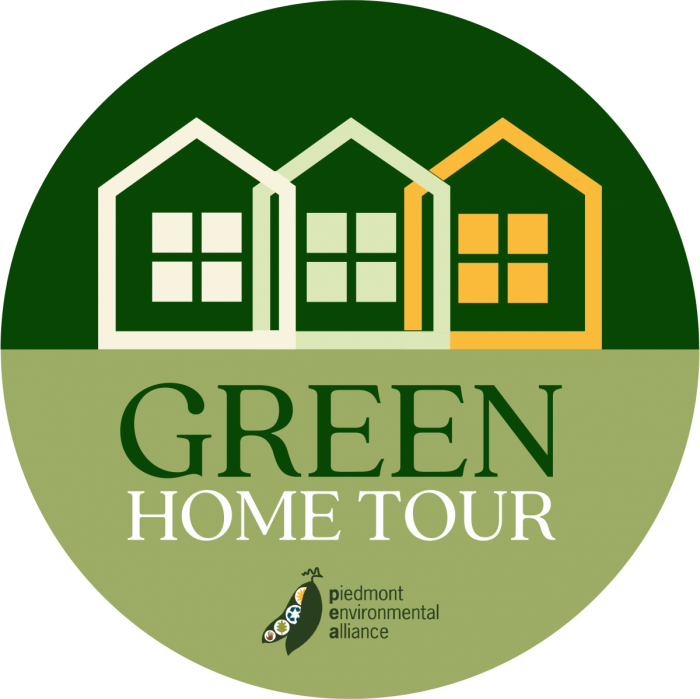
As you prepare for Piedmont Environmental Alliance’s debut Green Home Tour on June 1st, you are likely asking yourself a series of questions: What is a green home? Do I already have one? If not, what are some best next-steps for greening my home?
At PEA, we think the definition of a green home extends well beyond the walls of our houses, townhomes, and apartments. From 30,000 feet, PEA defines a green home as a household that is working intentionally to benefit the community and the planet by integrating values like energy sustainability, reduced consumption, and protection of the natural environment. Up close, making your home more green can be as simple as caulking a drafty window, using non-toxic cleaning products, or avoiding single-use plastics. Other times, it’s a pledge to fully electrify your home by replacing aging, fossil-fueled appliances, like a gas furnace or a cooking range, with an electric heat-pump and an induction stove. Or, even installing rooftop solar panels.
There are, of course, countless actions you can take right now and in the near future. And the financial incentives for doing so have never been bigger, thanks to the passage of The Inflation Reduction Act in 2022.
For now, we have focused our attention on four pathways that will help you and your family better understand the cost-savings, climate-cooling, and community-building benefits of a green home. These kinds of changes and investments, at the individual and policy levels, ultimately make our homes healthier and more affordable, too.
With our recommendations below, we want you to take a few minutes to think about the technologies, practices, and natural elements that create your home and then ask yourself how they serve you and our community. So many things we accept as givens, in fact, make us less safe, warm our planet, and financially benefit entities that do not share our interests or values. Let’s make a plan.
1. Home Efficiency and Electrification
The cleanest, and cheapest, energy is the energy we didn’t use in the first place. Learn more here about steps you can take to make your home all the more healthy and affordable.
2. Solarizing Your Home
There has never been a better time to go solar, especially with all of the federal incentives available and the community group purchasing campaign that PEA wants you to be a part of. Find out more here.
3. Composting and Water Management
Composting and rain collection are critical practices that help us turn waste into practical tools that can both enrich our environment and save us money. Check out these resources to learn more about best next steps and the reasons why we need to take action:
4. Native Landscaping
Native plants are better adapted to the local climate and soil conditions, which means they require less water, fertilizer, and harmful pesticides. Native landscapes are also beautiful, and provide aesthetic and wildlife benefits year round. We recommend the following readings: